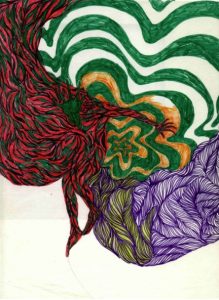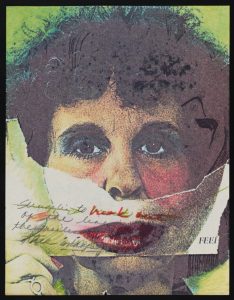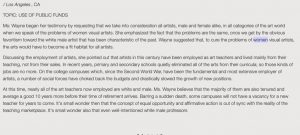Buffy Sainte-Marie song “Now That the Buffalo’s Gone,” 1964
This source is a YouTube video from the Daily Motion website of a song by Buffy Sainte Marie, a native American woman (a member of the Cree tribe) who was a singer and songwriter from the 1960’s through the present. This song was released in 1964, with a purpose to entertain, for the audience of other Native Americans with a shared experience of her. The song talks about the tragedies of the many massacres and wrongdoings that were done to the Native Americans throughout their history by the American government. Millions of lives were lost, the buffalo (an important animal to the Native American culture) population was ultimately destroyed, and the Native American’s land was ripped away from them. This artist illustrates the pain of her and her ancestor’s experience: turning it into music. The song is from a YouTube video. This song displays the project’s main idea of how women have used music to voice the pain they have felt through times of oppression.
Adrian Piper painting, “LSD Alice,” 1965

This source is a piece done by Adrian Piper in 1965. Piper is an African American artist whose art directly addressed topics such as racism, sexism, xenophobia, etc. This specific piece is an image of an outline of a woman who appears to be falling into a vortex. The piece plays with colors and patterns, and implies usage of LSD, which Piper experimented with in the 1960’s. This piece of art was aimed at other young people who were also experimenting with drugs during the counterculture movement of the 1960’s, in addition to other people of color and women in this time who had lesser civil rights. The piece emotes feelings of loneliness and disorientation; feelings shared by minority communities who rebelled during the 1960’s because they were treated as second-class citizens. This source is a beautiful example in this project of how women used the pain of the discrimination that they were faced with to create art that was able to unite other women and communities who could relate.
Judith Golden piece, response to “What is Feminist Art?” 1976

This piece of art is a part of the 1976 exhibition “What is Feminist Art?” This exhibition was created by Ruth Iskin, Lucy Lippard, and Arlene Raven- three feminist activists- at the Woman’s Building in Los Angeles and is now a part of the Archives of American Art at the Smithsonian Institution in Washington, D.C. This piece is a mixed media artwork piece done by Judith Golden- a mixed media artist- in response to the question “what is feminist art?” and it is an image of a woman who is holding a piece of paper with an image of another woman’s painted lips over her mouth. The piece emotes a feeling of detachment and hopelessness. Women in the second wave feminist movement of the 1960’s and ‘70’s were able to express their feelings of uselessness, and the feeling that their voices were not heard. This piece of artwork was intended to entertain, and it was made for the audience of other feminists, artists, and audiences. This source was located through the Archives of American art database in the Dickinson library. Golden’s piece and the exhibit overall represent a major theme of this project that women will join together and create something beautiful from something oppressive and ugly.
California Commission on the Status of Women, 1979


This is a report documenting the California Commission on the Status of Women in Sacramento, California, in 1979. (Attached are screenshots from the document and the link to access.) This document was created by the California Commission on the Status of Women; an organization that works with public policymakers and educates the public to create change for women’s rights. The purpose of the source is to inform those involved in the fine arts programs in colleges and universities across California of the exclusion of women from these programs, and to persuade those individuals and organizations to take the Commission’s recommendations for change. The report is composed of data collected from surveys across 50 California colleges and universities and concludes that even with the assistance of affirmative action, women are still facing discrimination in these programs. This source also provides recommendations, including educational, financial, and legislative recommendations. This source was located on the Alexander Street database in the Dickinson library. The report helps to give context to this project by proving that women face discrimination in schools and in the fine arts. Even women who are privileged enough to be accepted into fine arts programs in colleges and universities face lack of support, lack of exposure, and structured discrimination.
